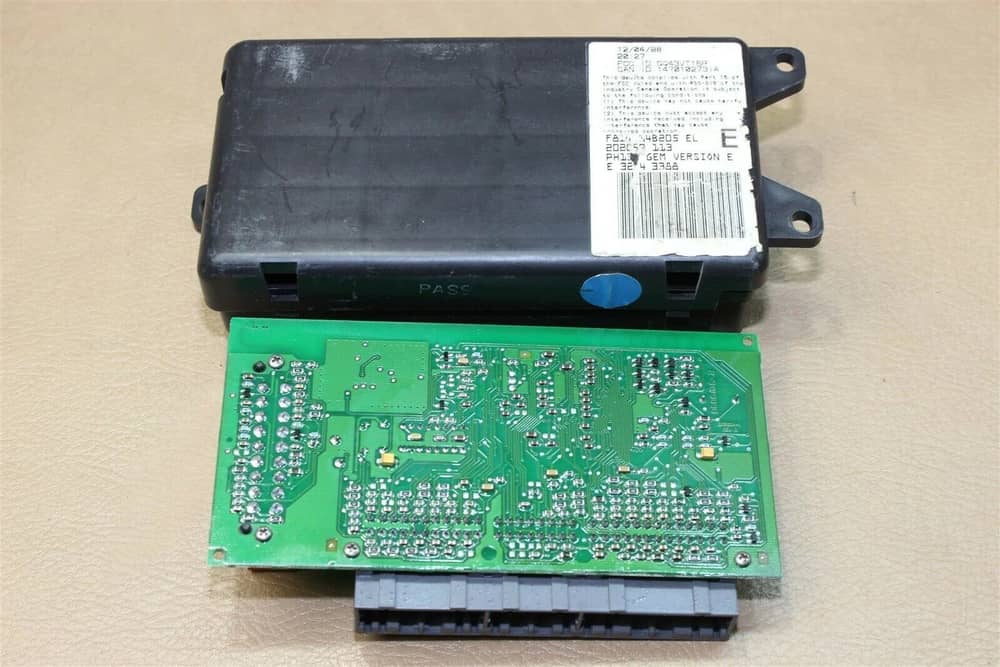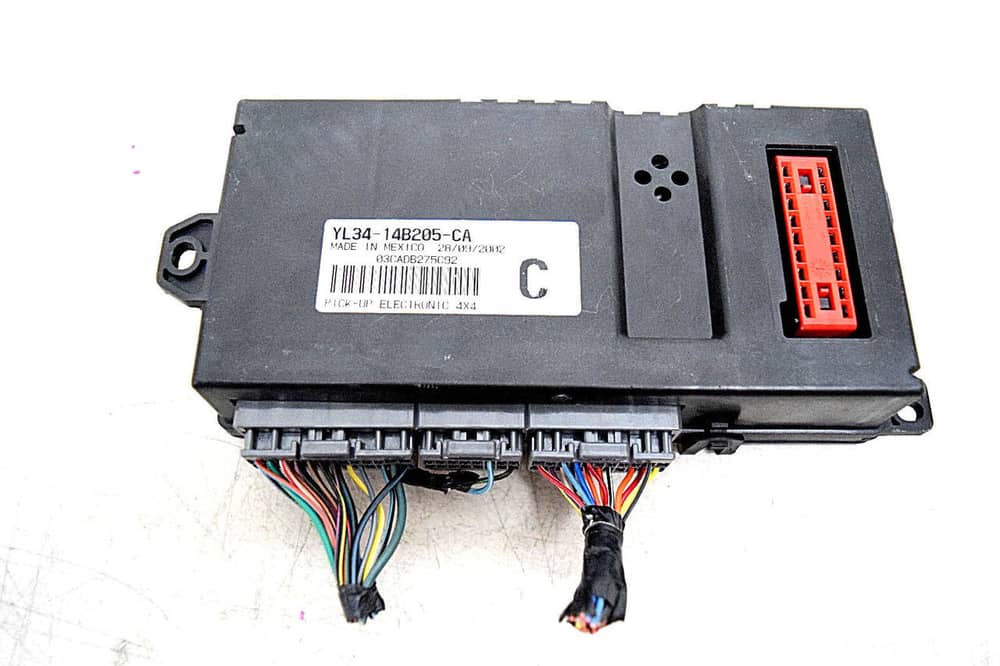The GEM module acts as the command and control center for various electronic systems in a vehicle. The symptoms of a bad GEM Module are malfunctioning GEM units in autos. So, what are bad GEM module symptoms and how may they be resolved?
When a GEM module begins to fail, it can set off a chain reaction of disruptive symptoms that have a substantial impact on the vehicle’s performance and safety. Flickering lights, unresponsive power windows, and inconsistent windshield wiper operation are all common indicators. Symptoms can also include strange warning lights, malfunctions in crucial car systems, and even difficulty starting. Recognizing and resolving these warning indicators is critical.
Now, let’s learn more about the symptoms, and we’ll assist you in determining the best way to fix them properly!
What Is GEM Module?
A GEM module, which stands for Generic Electronic Module, is an essential component of many modern automobiles’ electrical systems. It is mostly seen in Ford and Mercury vehicles. The GEM module serves as the vehicle’s central control unit for many electronic operations. This allows for communication across different systems and ensures that they function together flawlessly.
Interior and exterior lighting, windshield wipers, power windows, door locks, and several other electrical systems are all managed by the GEM module. It is critical in improving the convenience and safety characteristics of a vehicle.
When a GEM module dies or malfunctions, it can cause a variety of electrical issues in the car. This has an impact on how well certain features work. In such circumstances, troubleshooting or replacement of the GEM module may be required to return the vehicle’s electrical systems to peak performance.
What Are Bad GEM Module Symptoms?

A faulty GEM module in a car can cause a variety of symptoms such as dashboard warning lights, security system failures, and interior lighting issues… A more thorough list of common bad GEM module symptoms follows:
Erratic Electrical Component Behavior
The inconsistent performance of numerous electrical components is one of the most common symptoms. This may include sudden light flickering, particularly in the interior and exterior of the car. Power windows may behave erratically, failing to respond as expected, and windshield wipers may move in odd patterns.
Dashboard Warning Lights
Unusual or persistent warning lights on the dashboard of a vehicle are a red sign. These lights may indicate GEM module faults or problems in associated systems that need to be investigated further.
Door Lock and Unlock Problems
The GEM module is frequently in charge of the central locking system and keyless access. A faulty GEM module can cause problems locking or unlocking doors remotely using key fobs, as well as failures in the central locking system.
Vehicle Security System Malfunctions
A faulty GEM module can compromise the vehicle’s security and anti-theft system. This could cause issues arming or disarming alarms, immobilizers, or other security measures.
Interior Lighting Problems
Interior lighting issues may arise. Dome and courtesy lights are not working properly, or they respond slowly when doors are opened or closed.
Windshield Wiper Anomalies
The windshield wipers may act erratically, move at unexpected speeds, or even stall in the middle of a cycle. This reduces visibility during bad weather.
Power Window Failures
Power window malfunctions, such as the inability to open or close them or windows that operate sporadically. It could be a sign of a problem with the GEM module.
Unexplained Electrical Problems
Other electrical systems in the vehicle may exhibit strange behavior. They can include problems with the radio, climate control, or even the instrument panel.
You should be aware that these symptoms might also be caused by faults in the vehicle’s electrical system.
How To Fix Bad GEM Module Symptoms?

Here are some general actions you can take:
Step 1: Diagnosis
A correct diagnosis is critical. The symptoms of a faulty GEM module can be confused with problems in other elements of the vehicle’s electrical system. You can ask a competent mechanic how to utilize specialist diagnostic equipment to diagnose the problem with the GEM module.
Step 2: Module Replacement
It could be necessary to replace the GEM module if it turns out to be the problem. In most cases, this entails uninstalling the outdated GEM module and replacing it with a fresh one. Depending on the make and model of your particular car, the new module might need to be adjusted or programmed in order to work with it.
Step 3: Reprogramming
To meet the vehicle’s specs, the replacement GEM module may need to be reprogrammed or reconfigured in some circumstances. This phase is critical to ensuring that the module connects with other systems effectively.
Step 4: Addressing Related Issues
faults with GEM modules can occasionally be caused by faults in other elements of the electrical system. To avoid a recurrence of GEM module problems, it’s critical to fix any connected concerns, such as broken wiring or faulty sensors.
Step 5: Testing and Calibration
The vehicle should be extensively inspected after GEM module replacement and reprogramming to ensure that the symptoms have been remedied. Let’s double-check the operation of all concerned systems, such as lights, power windows, door locks, and other components.
Step 6: Follow Manufacturer Guidelines
Follow the manufacturer’s replacement and reprogramming instructions. These can differ depending on the vehicle’s make and model.
Step 7: Seek Professional Help
Repairing or replacing a GEM module is a difficult task that necessitates specific knowledge and tools. It is strongly advised that any service be performed by a qualified automotive mechanic to ensure the safety and proper operation of your car.
Remember that resolving GEM module symptoms may incur expenditures. Furthermore, to minimize any issues, it is critical to have a skilled technician execute the necessary procedure.
How Much Does It Cost When Replacing The GEM Module?
GEM module replacement might cost anything from $200 to $750 or more in total. It’s advisable to speak with a reliable automotive service center to get an accurate estimate. When replacing your GEM module, you must pay the following fees:
OEM GEM Module
A genuine OEM GEM module can cost anywhere from $150 to $400 or more, depending on the make and model of the vehicle.
Aftermarket GEM Module
Aftermarket GEM modules are frequently less expensive, with costs ranging from $50 to $150 or more. The quality and compatibility of aftermarket modules, on the other hand, may vary. As a result, you must select a recognized brand and confirm that it is compatible with your vehicle.
Labor Costs
Labor costs for changing the GEM module can also vary greatly based on the job’s intricacy and local labor rates. The cost of labor can range from $100 to $300 or more.
Programming and Diagnostics
Additional expenses for diagnostic time and programming may apply if the new GEM module requires programming or reconfiguration to match your vehicle. This can add $50 to $150 or more to the overall cost.
Taxes and Fees
When calculating the total cost, don’t forget to include any applicable taxes and shop fees.
